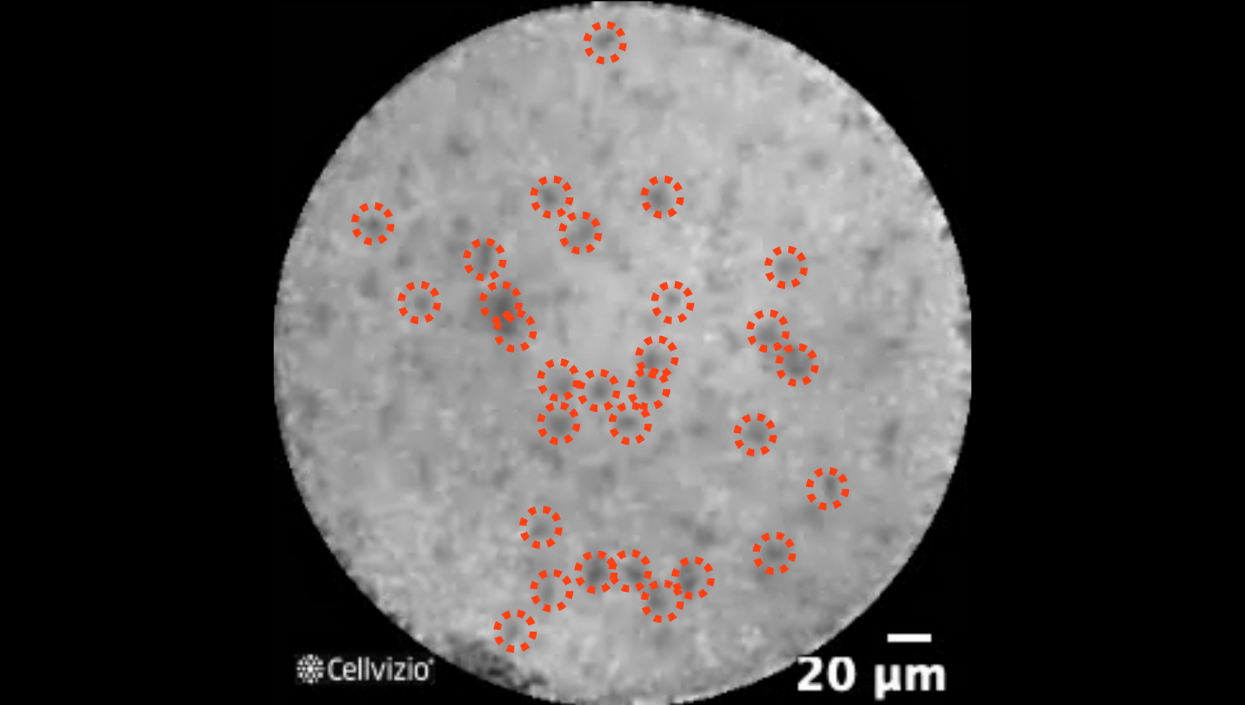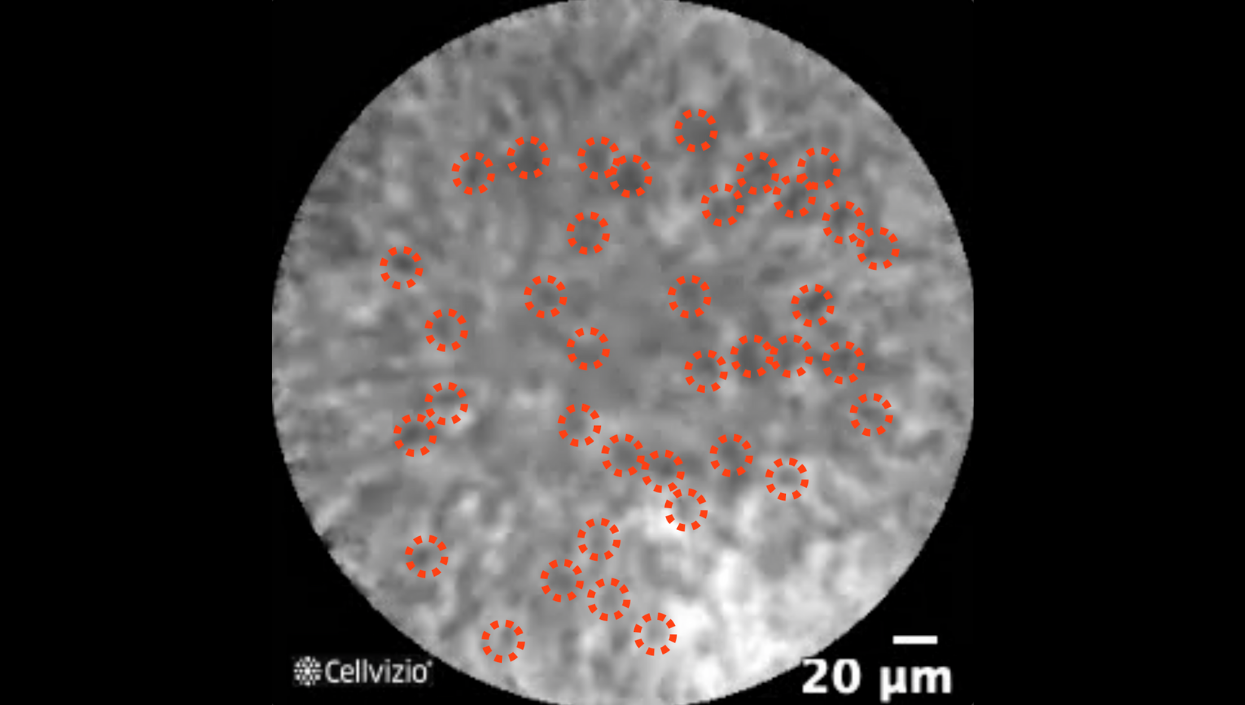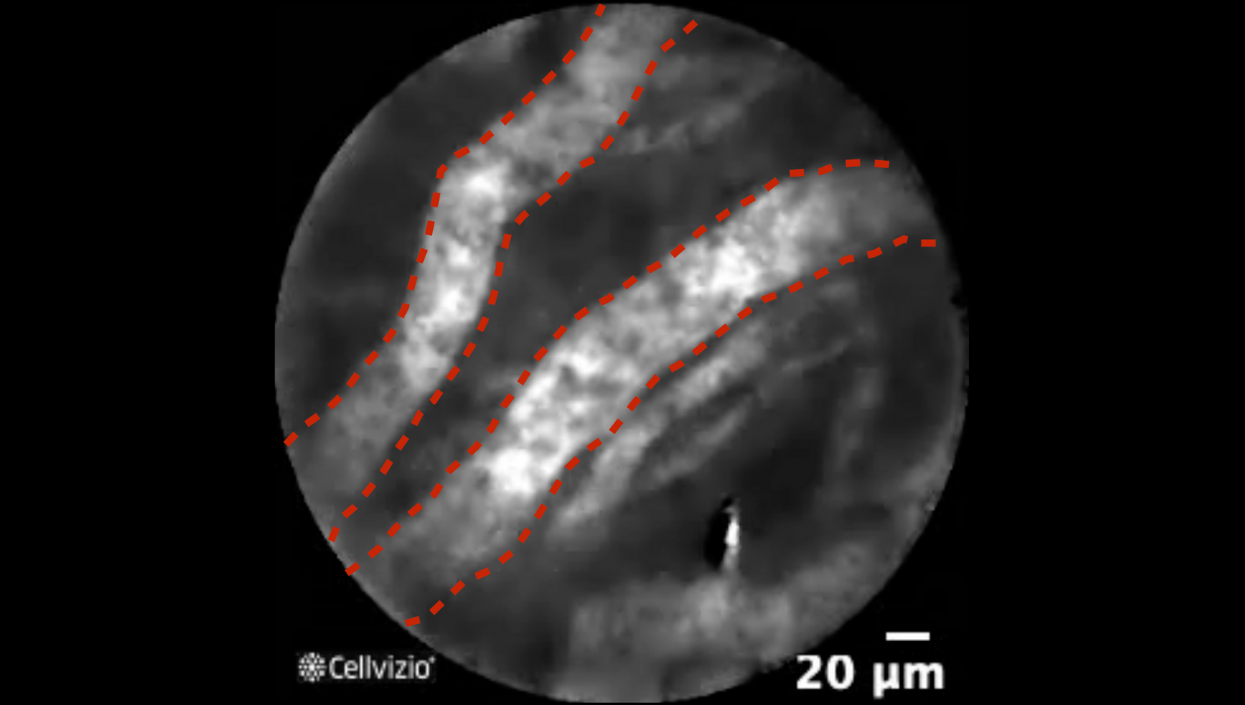- Peripheral lung nodules with nCLE
- Lesson 02/05
Structural Findings
Please note, nCLE is used in conjunction with transbronchial needle aspiration (TBNA) procedures to puncture and image lung nodules, and fits through a transbronchial needle with an inner diameter of 0.91 mm.
You may review the various image criteria and videos before doing some self training questions.

Bronchial cells
(Equidistant, homogenous enlarged cells)

Blood cells
(Absence of directional streaming)

Vascular structures
PLAY THE TRAINING VIDEOS:
Organ: Lung
Investigated pathology: Peripheral lung nodule with nCLE - Bronchial Cells
Probe type: AQ-Flex 19
Laser wavelength: 488 nm
Courtesy: Dr. Sandeep Bansal, DuBois Regional Medical Center, PA, USA
Organ: Lung
Investigated pathology: Peripheral lung nodule with nCLE - Blood Cells
Probe type: AQ-Flex 19
Laser wavelength: 488 nm
Courtesy: Dr. Sandeep Bansal, DuBois Regional Medical Center, PA, USA
Organ: Lung
Investigated pathology: Peripheral lung nodule with nCLE - Vascular Structures
Probe type: AQ-Flex 19
Laser wavelength: 488 nm
Courtesy: Dr. Sandeep Bansal, DuBois Regional Medical Center, PA, USA
These criteria have been reported and assessed in clinical studies. Other criteria of interpretation might exist. Thus whenever possible, confirmatory evaluation via conventional histopathology or any other clinical information is recommended.
